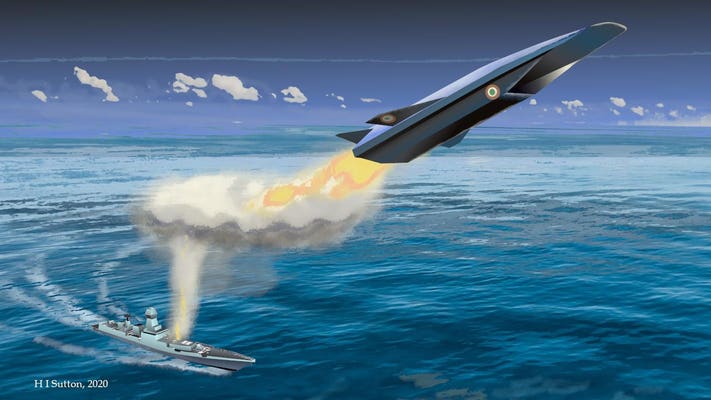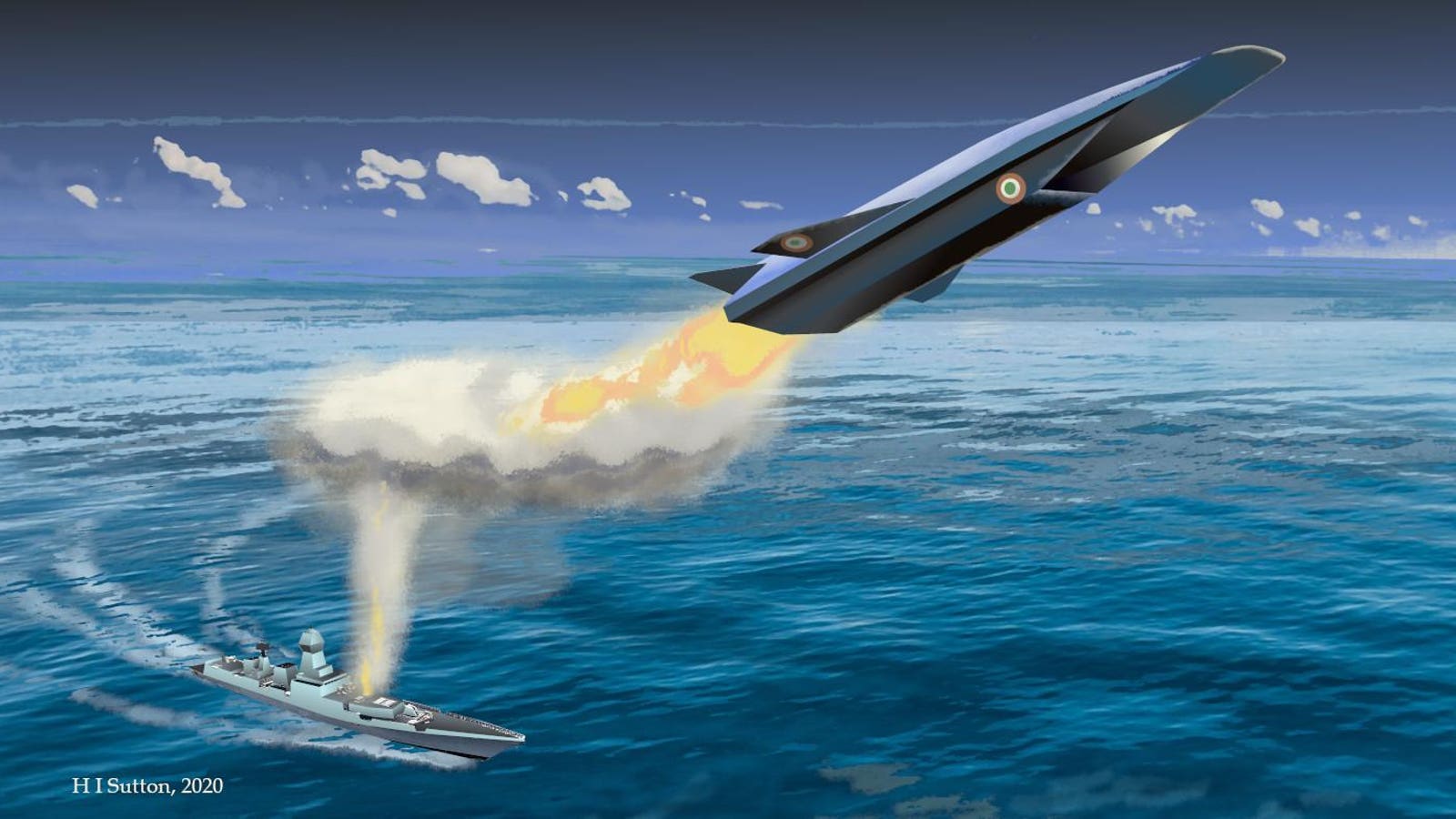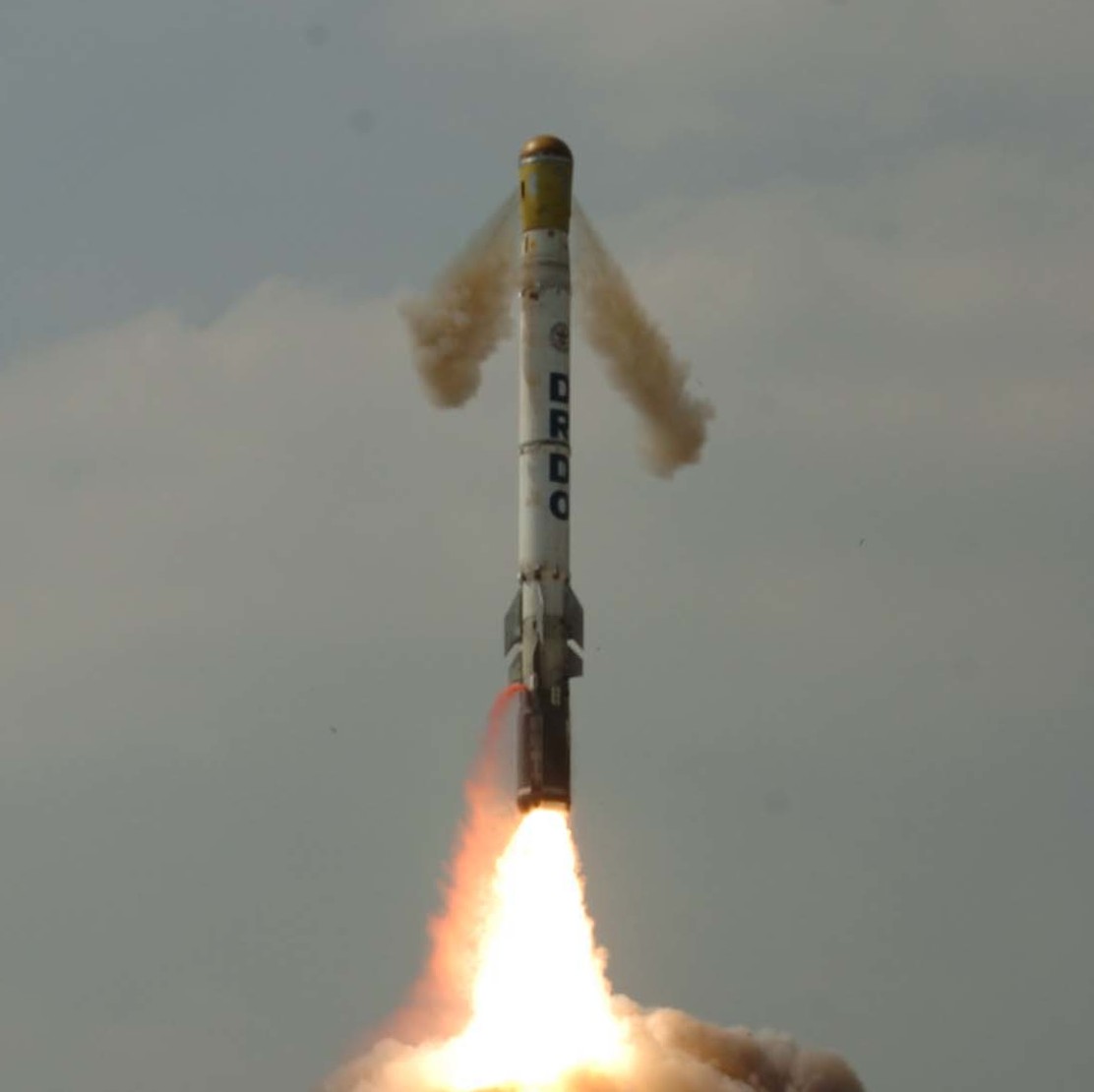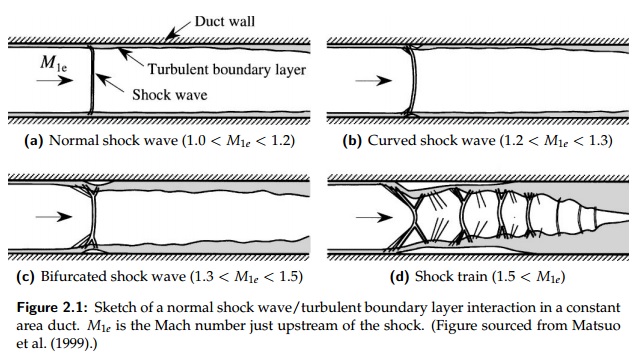An awesome article on the background of the HSTDV test flight :
India's development of the hypersonic speed vehicle
By
T. S. Subramanian • 17/09/2020 at 3:29PM
The successful launch of the HSTDV caps about 14 years of sustained efforts and perseverance of DRDO personnel, making India only the fourth country in the world to successfully develop and launch hypersonic technology demonstrator vehicles.
It was a convincing camouflage. In the midst of a scrub jungle were two sheds, shaded by the trees around them. The place looked sequestered. Near the sheds was a tall wall which had developed cracks caused by a tree growing on it. In a clearing nearby, there was a banyan tree. In one of the sheds, a high-technology project was in progress. There was a maze of wires, box-like structures and pipes, both made of metal. It was obviously an aero engine that was being built. It was January 2013.
Three young men, A. Raju, P. Satya Prasad and A. Rolex Ranjit were bustling about in the shed, and they were a picture of calm confidence. It was the premises of the Defence Research and Development Laboratory (DRDL), on the outskirts of Hyderabad. The project under way then in the shed was the Hypersonic Technology Demonstrator Vehicle (HSTDV), spearheaded by the DRDL. What was being developed there was a powerful animal called the air-breathing Supersonic Combustion Ramjet or Scramjet engine. It was an ambitious project of the DRDL, which comes under the Defence Research and Development Organisation (DRDO). The Project Director of the HSTDV at that time was Dr. R.K. Sharma.
More than seven and a half years later, on September 7, 2020, the dream of DRDO’s missile technologists, including that of DRDO Chairman, Dr.G. Satheesh Reddy, Dr. Sharma, the HSTDV's current Project Director, Dr. B.V.N. Charyulu, and the three young men came to pass.
The sketch shows the HSTDV or the cruise vehicle that was flight tested on September 7, 2020 for 20 seconds at a hypersonic speed of more than Mach six. FTC stands for Fin Tip Control. Cylindrical Shroud Assembly is the heat shield covering the cruise vehicle. Credit: By Special Arrangement.
At 11.03 a.m. on that day, a launch vehicle which was derived from DRDO's Agni I ballistic missile rose from a launch complex on the A.P.J. Abdul Kalam Island, off the Dhamra coast, Odisha. On top of the launch vehicle stood the HSTDV. The lift-off weight of the launch vehicle plus the HSTDV mated on top was about 14 tons.
At the heart of the HSTDV was the indigenous air-breathing, scramjet engine, developed at the DRDL. The HSTDV was called the cruise vehicle or the cruiser. The mission sequence was as follows :
1. There were no glitches in the countdown prior to the lift-off. The launch vehicle vaulted off the launch pad at the appointed time of 11.03 a.m. and sliced steadily through the atmosphere at a speed of Mach 5.6. The launch vehicle was rugged enough to withstand the loads imposed on it when it raced through the atmosphere at that velocity.
2. Once the launch vehicle carried the HSTDV cruise vehicle to a height of 30 km, the nose cone and the circular panels (the heat shield), which encapsulated the cruise vehicle and protected it from severe heating and atmospheric turbulence, separated and fell away. Then, the cruise vehicle, which was totally exposed to the atmosphere, was pushed out of the parent/launch vehicle. The launch vehicle fell into the Bay of Bengal. The cruiser took a little longer to stabilise.
3. Then the real action began. As the intake ducts in the HSTDV opened, air from the atmosphere rushed at a supersonic speed of more than Mach 2 into the combustion chamber of the scramjet engine and ignited the ethylene fuel. The scramjet engine ignition took place in an autonomous mode. For the next 22 seconds, the HSTDV cruised smoothly at Mach 6 and fell 40 km away in the Bay of Bengal. The duration set for this technology demonstrator's flight was twenty seconds. The mission was a huge success. It signalled that DRDO had mastered the highly complex Supersonic Combustion Ramjet or Scramjet engine technology. There was joy in the Mission Control Centre on the tiny island.
In an air-breathing scramjet engine, air from the atmosphere is rammed into the engine's combustion chamber at a supersonic speed. In the chamber, the air mixes with the fuel to ignite a supersonic combustion but the flight will be in a hypersonic regime. So it is called Supersonic Combustion Ramjet or Scramjet.
Soon after the mission's success, DRDO Chairman Dr. G. Satheesh Reddy told this writer over the phone, "This is a great technological achievement of the country. The scramjet engine has been successfully flight-tested at hypersonic speeds within the atmosphere. It paves the way for the development of many more critical technologies, materials and particularly hypersonic vehicles."
The HSTDV cruise vehicle. Photo credit: DRDO.
Dr. Avinash Chander, former DRDO Director General, put his finger on where the mission's success lay. He said, "We have been able to demonstrate the ignition and sustain the ignition for the flight duration of 20 seconds. The engine should be ignited when the air from the atmosphere is rammed into its combustion chamber at a supersonic speed. It has to be done in milliseconds. The flame should be held when the cruise vehicle is flying in the atmosphere at a hypersonic speed of Mach 6 - 7.
Dr. Sharma offered a comparison. He said that igniting the engine when the air was being rammed into the combustion chamber at a supersonic speed was akin to "lighting a match-stick in a hurricane." He added, "Our job was to prove the scramjet engine. We did it."
A hypersonic vehicle has huge potential in both "military and civil applications", said Dr. Avinash Chander, who was a key architect of India's Agni III, Agni IV and Agni V missiles. "Tomorrow, it can be upscaled and used as a hypersonic missile. With its hypersonic speed, it will pose a big challenge for interception." The scramjet engine could be used in civilian passenger air transportation. It could cut down the time of air travel from India to the US by one-sixth. Hypersonic vehicles can put satellites into orbit at a low cost.
Besides, as a DRDL engineer said, a hypersonic missile "will give you a global reach in targeting places and striking them because of its speed."
Dr. Sharma told this writer in 2013 that the critical technologies needed to be developed for the mission included the scramjet engine and hydrocarbon fuel, the engine's ignition and sustaining it, aero-propulsion integrated configuration, and the development of materials to take care of high temperatures that occurred due to air friction on the leading edges of the cruise vehicle's wings, tail surface and nose tip. The temperature in these areas could exceed 1,000 degrees Celsius. "The internal propulsion system will be very hot. So you need heat-sink materials, which can absorb the temperature," he said. The proper separation of the HSTDV from the launch vehicle was also critical. They were all developed for the September 7, 2020 flight.
The launch vehicle, with the cruise vehicle, mated on top, on the. A P J Abdul Kalam Island, off the Odisha coast, just before the launch, on September 7, 2020. Photo credit: DRDO.
A DRDO top brass called the HSTDV success "one of the greatest technological achievements of India in the past 40 years because it paves the way forward for building missiles that can fly at a hypersonic speed of Mach 6 - 7. " What was important was that it was not an experimental vehicle that was involved in the HSTDV mission. It was almost a prototype vehicle. "The vehicle's design is close to building bigger systems involving the fundamentals. This is the message from the mission", he said.
On May 23, 2016, the Indian Space Research Organisation's (ISRO) Reusable Launch Vehicle -Technology Demonstrator (RLV-TD) flew at a hypersonic speed and its winged space plane made a hypersonic re-entry into the earth's atmosphere. The winged space plane splashed down in the Bay of Bengal. ISRO had earlier tested the air-breathing scramjet engine technology on its Advanced Technology Vehicle (ATV) on August 28, 2016, holding the flame for five seconds at a hypersonic speed.
However, DRDO's HSTDV mission on September 7, 2020 was of a much higher magnitude. The cruise vehicle flew at a hypersonic velocity of Mach 6 for over 20 seconds. While ISRO's ATV was a small one, the HSTDV had a practical configuration which would aid in designing a hypersonic missile later.
Dr. A. Sivathanu Pillai, founder and former Chief Executive Officer of the BrahMos Aerospace Private Limited, called the HSTDV success "a significant milestone" in DRDO's journey for "developing a long range hypersonic missile." The flight was to prove the scramjet engine which forms "the crux of the hypersonic technology". In an interview in 2013, Dr. Avinash Chander, then DRDO Director-General, said, "The HSTDV is a very strong thrust area of our future. But it is also a very high technology area. It has a lot of challenges in the areas of dynamics, hypersonic regimes etc... The internal scramjet combustion is a totally new area. We have tremendous heat generation there, the sustenance of combustion, the air intake - they are all very critical..." (Frontline, January 24, 2014).
The fuel used in the mission was ethylene, and air from the atmosphere was the oxidiser. Air was injected into the fuel at a particular, very high temperature. If that temperature was not achieved, ethylene would not burn, he said.
The missile complex at Hyderabad, comprising three facilities, played important roles in developing the HSTDV. The three facilities were DRDL, the Research Centre, Imarat (RCI) and the Advanced Systems Laboratory (ASL). Despite being hobbled by the coronavirus pandemic, the HSTDV project team worked energetically to carry forward the mission activities. The Project Director, Dr. B.V. N. Charyulu, Director, DRDL, Dr. Dashrath Ram, Director, RCI, Dr. B.H.V.S. Narayana Murthy, Director, ASL, Dr. M.R.M. Babu and Director-General (Missiles and Strategic Systems), DRDO, Dr. M.S.R. Prasad led the launch operations. A lot of credit should go to the nodal facility, the DRDL, for designing, developing and building the HSTDV and its scramjet engine. Testing the scramjet engine on the ground required advanced expertise.
The RCI came up with mission-critical avionics systems, including the navigation, control and guidance systems. It developed the software for these. The RCI made key contributions in actuation and telemetry systems.
The ASL delivered the total launch vehicle, which was derived from the Agni 1 missile. But the Agni 1 underwent certain modifications which were required for the mission. Its control systems were fine-tuned to meet the mission requirements. When the launch vehicle climbed vertically at a speed of Mach 5.6 through the atmosphere, with the HSTDV sitting on top of it, there were huge demands on its control systems. So its control systems were ruggedised. Simulation tests were done on the ground to test the ruggedness of the control systems and the margins available in the systems.
While the earlier flight-trial of the HSTDV in June 2019 had control problems, there were no glitches this time. The launch vehicle put the HSTDV in the correct trajectory and its scramjet engine worked well.
The success caps about 14 years of sustained efforts and perseverance of DRDO personnel.
The successful launch of the HSTDV caps about 14 years of sustained efforts and perseverance of DRDO personnel, making India only the fourth country in the world to successfully develop and launch hypersonic technology demonstrator vehicles.
www.asiavillenews.com


















